#Cat Accessories
Explore tagged Tumblr posts
Text

Mushroom cat house crochet pattern - PDF file by sheacrochetxx
#sheacrochetxx#crochet pattern#crochet pattern pdf#pdf download#crochet download#mushroom cat house#mushroom#mushroom crochet house#cat accessories#pet bed#cat bed
157 notes
·
View notes
Text
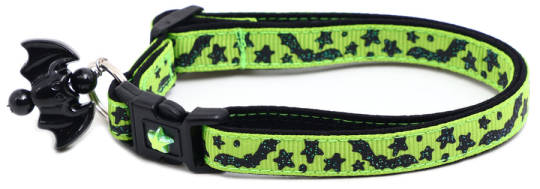
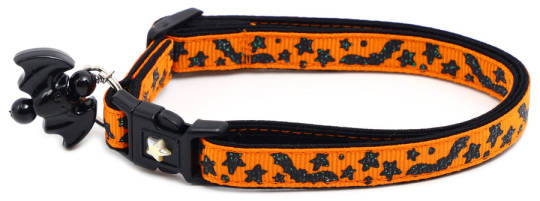
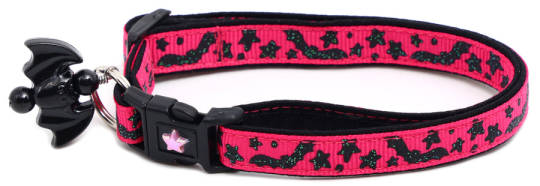

Spooky Bat Cat Collars!
92 notes
·
View notes
Text

I'm continuing to watch Azumanga. I love Sakaki sooo much.
#art#sketch#sakaki azumanga daioh#azumanga daioh#cat#cat accessories#i like this sakaki sketch more than first
38 notes
·
View notes
Text



Silly cat earrings i own
(i have two this is just a pic of one of them btw)
2 notes
·
View notes
Photo





(via "Fall WonderFall Back of Hoodies & Sweatshirts, etc" Zipper Pouch for Sale by IvaRenee)
#artists on tumblr#pencil#pencil case#makeup#makeup bag#pouch#wallet#change#change bag#keys#key pouch#money pouch#old money#autumn vibes#fall vibes#cat accessories#hat#baseball cap
4 notes
·
View notes
Text
Find Puuuuuurfect items at purrpowerco.com
#cat#cute cats#cats of tumblr#i love cats#cute#kitty cat#i love my cat#cats are the best#cat loves its hooman#cats of instagram#cat store usa#cat shenanigans#cat supplies#cat accessories#purrpowerco
5 notes
·
View notes
Text
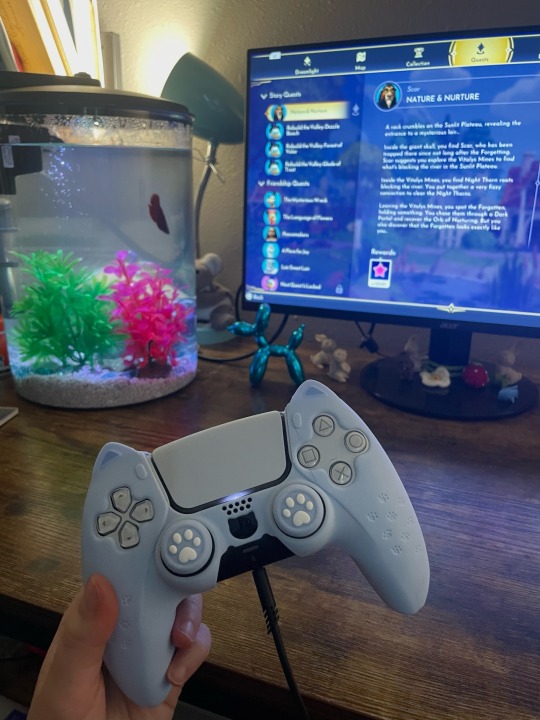
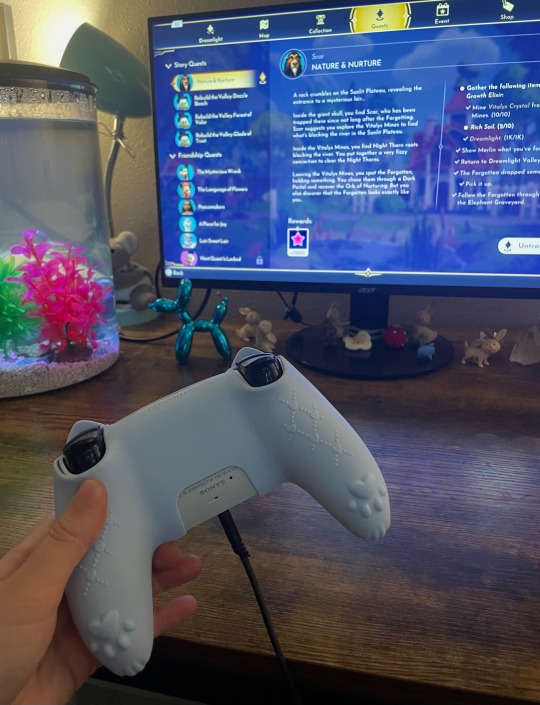
this controller skin is officially one of the best purchases i've ever made <33
(it's also on sale right now)
#soft aesthetic#gaming aesthetic#gamer gf#ps5 controller#gaming accessories#blue aesthetic#gamer aesthetic#gaming desk#gaming design#cozy games#cozy gaming community#cozy aesthetic#cozycore#coquette core#cat aesthetic#cat accessories#gaming#cute art#cutecore#cute aesthetic#cute decor#maximalist aesthetic#gaming discord#kawaii aesthetic#kawaii accessories#animal crossing#acnh#acnh community#disney dreamlight valley
12 notes
·
View notes
Text


🌟 Star Kitty pins have been restocked! Now come with a FREE holographic sticker woth your order! Reblogs are very appreciated ❤️
Adopt your kitty here!⬇️
➡️ https://lynswatercolors.etsy.com/listing/611038727 ⬅️
3 notes
·
View notes
Text



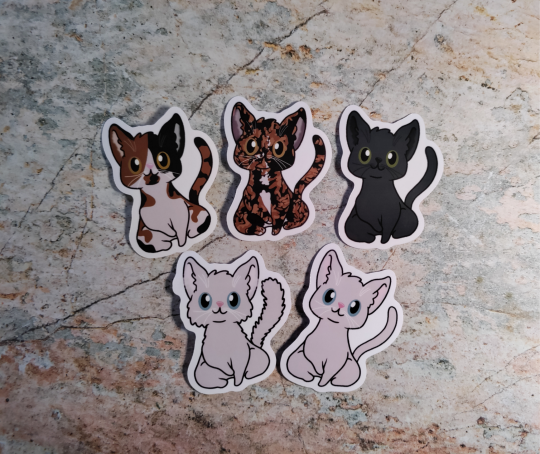
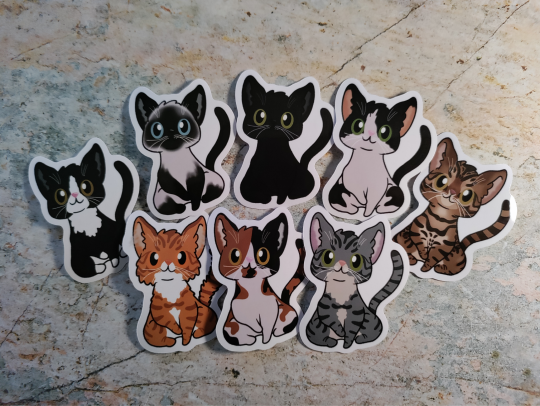
Cat Vinyl Stickers
#art#etsyshop#digital art#kawaii#kawaii accessories#kawaii aesthetic#kawaii art#digital illustration#digital artist#vinyl stickers#stickers#cat stickers#pet art#pet accessories#cat accessories#cats#cat art#cute kitty#black cat#tabby cat#calico#tuxedo cat#bengal#russian blue#tortoise shell cat#siamese#orange tabby#silver tabby#brown tabby#etsysmallbusiness
16 notes
·
View notes
Text

Clementine Cat Collar by graciespawprints
254 notes
·
View notes
Text
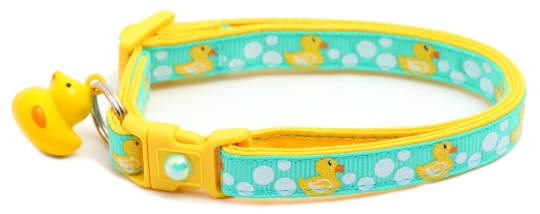
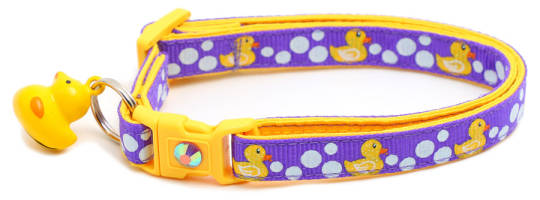
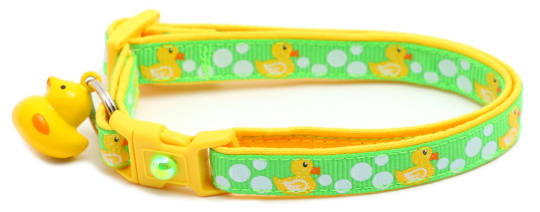
Rubber Ducky Cat Collar
89 notes
·
View notes
Text
Understanding Different Types of Cat Litter: Pros and Cons
Making the right choice of cat litter is a crucial decision for every cat owner. With an array of options available, selecting the most suitable one for your feline friend can feel overwhelming. This guide will explore the various options of cat litter on the market, including traditional clay litter, clumping litter, natural and biodegradable litter, silica gel litter, scented and unscented litter, and even alternative options. We'll discuss the pros and cons of each type, so you can make an informed decision and select the best litter for your furry friend.

Clay Cat Litter
Traditional clay cat litter is one of the most popular options on the market. It's made from natural clay minerals that are dried and processed into small granules. Clay cat litter is available in both unscented and scented varieties, and is often the most affordable litter option.
One of the benefits of clay cat litter is its ability to absorb moisture, which helps control odors. However, it's important to note that traditional clay litter is non-clumping, which means it can be more difficult to clean and may require more frequent replacement.
In addition, some cat owners may have concerns about the environmental impact of using clay cat litter. The production and disposal of clay litter can contribute to environmental issues such as mining and landfill waste.
Overall, clay cat litter is a reliable and cost-effective option for cat owners who prioritize odor control. However, if you're looking for litter that's more environmentally friendly or easier to clean, other options may be worth considering.
Clumping Cat Litter
One of the most popular cat litter options on the market today is clumping cat litter. Known for its easy clean-up and convenience, this type of litter has become a go-to for many cat owners.
Clumping litter is made of small granules of clay or other absorbent materials that form tight clumps when wet, making it easy to scoop out urine and feces. This type of litter is also known as scoopable litter, due to its easy removal.
One key benefit of clumping cat litter is its ability to trap and eliminate odors quickly. The clumps form around any waste, sealing in smells and making it easier to keep litter boxes smelling fresh.
This type of litter is also highly absorbent, meaning it requires less frequent changes compared to non-clumping litter. With clumping litter, cat owners can simply scoop out the clumps and add more litter as needed, extending the life of the litter box fill.
However, there are some potential downsides to consider. Clumping litter can be more expensive than traditional non-clumping litter and may not be suitable for all cats. Some cats may be sensitive to the dust that is often created by this type of litter, leading to respiratory problems. To avoid these issues, it's important to select a high-quality clumping litter that is free of harsh chemicals and additives.
Natural and Biodegradable Cat Litter
For cat owners who are environmentally conscious, natural and biodegradable cat litter options are becoming increasingly popular. These litters are typically made from materials such as pine, corn, wheat, and recycled paper and are marketed as eco-friendly alternatives to traditional clay litter. However, they also have some potential drawbacks to consider.
Pros:
Environmentally friendly: These litters are often biodegradable, compostable, or recyclable, making them a more sustainable option than clay litter.
Dust-free: Many natural litters are less dusty than clay litter, which can be beneficial for cats and their owners who have respiratory issues.
Easy to dispose of: Some natural litters can be safely flushed down the toilet or composted in your backyard.
Cons:
Expensive: Natural and biodegradable litters are generally more costly than traditional clay litter.
Less effective odor control: Some natural litters may not control odor as well as clay litter, which can be a concern for cat owners.
Variability in quality: With so many options available, it can be difficult to find a natural litter that works well for you and your cat.
Tracking: Some natural litters can be lightweight and prone to tracking, meaning that your cat may carry litter outside the box.
Ultimately, the decision to use natural and biodegradable cat litter will depend on your individual preferences and values. If you are looking for a more sustainable option and are willing to pay a higher price, these litters may be a good fit for you and your feline friend. However, it's important to keep the potential drawbacks in mind and test out a few different options before committing to one particular brand.
Silica Gel Cat Litter
If you're looking for highly efficient and low-maintenance cat litter, silica gel cat litter might be the right option for you and your feline friend. This type of litter is made of small beads of silica gel, which are highly absorbent and can lock in moisture and odors effectively.
Silica gel cat litter also tends to last longer than other types of litter, as it doesn't need to be changed as frequently. It's also a good option for busy cat owners who want to minimize clean-up time, as the litter doesn't clump and can be easily scooped out of the litter box.
Crystal Cat Litter
One variation of silica gel cat litter is crystal cat litter, which is made of larger crystals that can absorb even more moisture. Crystal cat litter tends to be even more long-lasting than standard silica gel litter, and it can be a great option if you have multiple cats or a particularly busy litter box.
However, it's worth noting that some cat owners and cats may not enjoy the texture of crystal cat litter, as the large, hard crystals can be uncomfortable to walk on. Additionally, the litter can be quite dusty when poured or disturbed, which may be a concern for some households.
Scented and Unscented Cat Litter
When it comes to choosing cat litter, there are two main options to consider: scented and unscented. Scented cat litter is formulated with added fragrances to help control odor and create a more pleasant smell in the litter box. Unscented litter, on the other hand, does not contain any added fragrances and relies on other methods to control odor.
Many cat owners prefer the unscented litter to avoid potential fragrance sensitivity issues with their feline friends. Scented litter may also mask the odor of waste rather than neutralize it, which may be less effective for some cat owners.
Unscented litter may be a better option for cats with respiratory issues or sensitivity to certain fragrances. However, this type of litter may require more frequent cleaning and changing to keep the litter box fresh and odor-free.
Both scented and unscented litter options may come with added benefits such as strong clumping abilities for easy clean-up, low-dust formulas for those with allergies, or eco-friendly materials for those who prioritize sustainability.
Scented cat litter pros:
Added fragrance helps control odor
May create a more pleasant smell in the litter box
Some options may have strong clumping abilities and low-dust formulas
Scented cat litter cons:
May mask odor rather than neutralize it
Some formulas may contain harmful ingredients
May cause sensitivity issues for some cats and humans
Unscented cat litter pros:
No additional fragrances that may cause sensitivity issues
Maybe more natural and eco-friendly options are available
Some options may have strong clumping abilities and low-dust formulas
Unscented cat litter cons:
May require more frequent cleaning and changing to control odor
Does not have added fragrance to mask the odor
Cat Litter Alternatives
If you're looking for alternatives to traditional cat litter, there are a few options available.
Natural Litter Substitutes
Natural substitutes for cat litter can be a great option for environmentally conscious pet owners. Shredded newspaper, wood pellets, and even dried leaves can all be used as alternatives to traditional cat litter.
One benefit of these alternatives is that they are often cheaper than store-bought cat litter. They can also be composted or disposed of more easily than clay or crystal litter.
DIY Cat Litter
Another alternative to traditional cat litter is making your litter at home. This can be done by shredding old newspapers or using recycled materials like sawdust or wood chips.
While homemade litter may be cheaper than store-bought options, it can be time-consuming to make and may not provide the same level of odor control or moisture absorption as commercial litter.
Conclusion:
Choosing the right cat litter for your furry friend is essential for their health and well-being as well as your convenience and budget. After reviewing all the types of cat litter available, let's summarize the key points to keep in mind when selecting the best option for you and your pet. Pets Lounge UAE is your best destination for shopping for high-quality cat litter.
Feline Preference
Cats can be very picky when it comes to their litter box, and some may prefer a specific type of litter. Pay attention to your cat's behavior and preferences. Natural litters may be a good choice for cats who love to scratch and dig in their litter, while others may prefer the texture and scent of clumping clay litter.
Odor Control
If odor control is a top concern, consider scented or clumping litters, as they tend to be more effective at trapping odors. Unscented litter may be a better option for cats with fragrance sensitivities.
Budget
When it comes to cat litter, there's a range of prices available. While clay litter may be more affordable, it may also need to be replaced more frequently. Natural litter and silica gel litter may be more expensive, but they have longer-lasting properties. Consider your budget and how much you're willing to spend on cat litter before making a final decision.
Environmental Concerns
If reducing your environmental footprint is a top priority, opt for biodegradable and natural cat litter that is made from sustainable materials. These eco-friendly options are better for the planet and can be disposed of safely.
Ultimately, the right cat litter for you and your feline friend will depend on your preferences and needs. Consider the pros and cons of each option and be willing to experiment until you find the right one. Just remember, a happy cat means a happy pet owner, and choosing the right cat litter is an important part of creating a comfortable and healthy home for your beloved feline.
2 notes
·
View notes
Text
Understanding Your Cat's Body Language: What They're Trying to Tell You
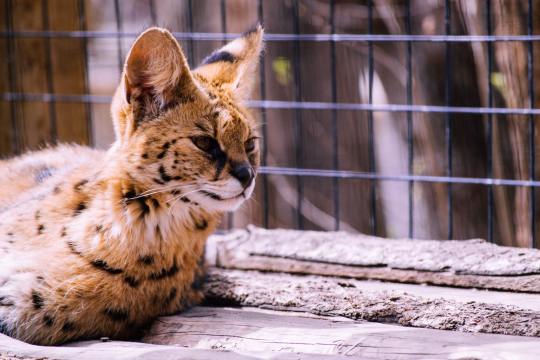
Introduction:
Effective communication with our pets goes beyond verbal cues. Pets often rely on body language to express their emotions and needs. By understanding their body language, we can strengthen our bond and provide them with the care they require. In this article, we'll explore the significance of interpreting pet body language, with a special focus on cats. Additionally, we'll discuss the introduction of cat dresses as a means of expression and comfort for our feline friends.
Tail Language:
A cat's tail serves as a vital communication tool. A gently swaying or upright tail signifies a content and confident cat. A puffed-up tail indicates fear or aggression, while a tucked tail suggests anxiety or submission. Observe your cat's tail movements in different situations to gauge their emotional state accurately.
Ear Expressions:
Cat ears can convey various messages. Upright ears indicate curiosity and attentiveness. Flattened or backward ears signal fear, aggression, or discomfort. If your cat's ears are constantly flattened, it may be a sign of stress or illness. Pay attention to these subtle cues to better understand your cat's mood.
Purring and Meowing:
Cats use vocalizations to communicate their needs and emotions. Purring generally signifies contentment, relaxation, or seeking attention. Meowing can express hunger, greetings, or a desire for interaction. Note the context and accompanying body language to decipher the intended message behind your cat's vocalizations.
Body Posture:
A cat's body posture provides valuable insights into their emotional state. A relaxed, stretched-out position typically indicates comfort and relaxation. An arched back, raised fur, or an inflated tail may signal aggression or fear. Understanding these postures can help you respond appropriately and provide a calming environment for your cat.
Eye Contact and Blinking:
Cats use eye contact and blinking as forms of communication. Slow blinking is a sign of trust, relaxation, and affection. It signifies that your cat feels comfortable and safe in your presence. However, prolonged staring or dilated pupils may convey fear or aggression. Respect your cat's personal boundaries and be aware of their comfort level.
Cat Dresses as Expression:
In recent years, cat dresses have gained popularity as a means of expression and comfort for our feline companions. These dresses are designed with lightweight and breathable materials to ensure the cat's comfort and mobility. While not all cats may enjoy wearing dresses, some may find it comforting and reassuring. It's essential to introduce cat dresses gradually, starting with short durations and positive reinforcement, while always respecting your cat's preferences.
Signs of Acceptance or Discomfort:
When introducing your cat to a dress, observe their body language for signs of acceptance or discomfort. Signs of acceptance may include relaxed body posture, lack of resistance, and calm behavior. On the other hand, signs of discomfort can manifest as attempts to remove the dress, increased vocalizations, or hiding. If your cat consistently displays discomfort, it may be best to forego dressing them and explore other ways to provide comfort and enrichment.
Body Language for Stress:
Understanding stress signals in cats is crucial for their well-being. Common signs of stress include excessive grooming, changes in appetite, restlessness, and avoidance behaviors. If you notice these signs, it's important to address the underlying causes and provide a calm and secure environment for your cat.
The Importance of Individuality:
Remember that each cat is unique, and their preferences may differ. Some cats may enjoy wearing dresses and may exhibit positive body language when dressed, while others may prefer alternative forms of expression. Always prioritize your cat's comfort and happiness above any aesthetic considerations.
2 notes
·
View notes
Text
Why do you need a Scratching Board For you cat from our store?
Did you know scratching is a natural behavior for cats?
But, a common reason why people don't like cats is because of their scratching. Yet, there are several advantages of scratching for cats. So, they should be allowed to scratch.
That's why you need to buy a cat scratch board for them
The best product I bought for my cat, and it has discounts and free shipping. Do not miss this opportunity
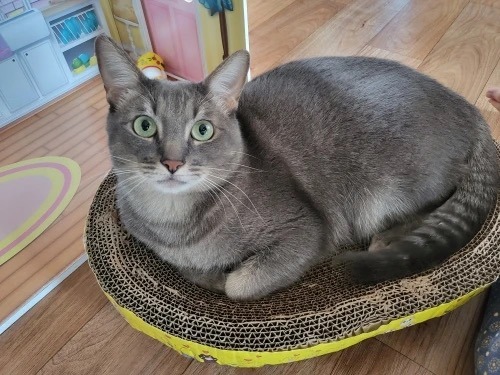
#dog#cat#cat lovers#kitten#dog and cat#catstagram#cat cute#cat accessories#cat art#cat care#animals#kitty
3 notes
·
View notes
Text

Light Spring Floral Over the Collar Pet Bandana - Size Small
#handmade#pet bandana#dog bandana#cat bandana#spring bandana#floral bandana#over the collar bandana#pet accessories#cat accessories#dog accessories
0 notes
